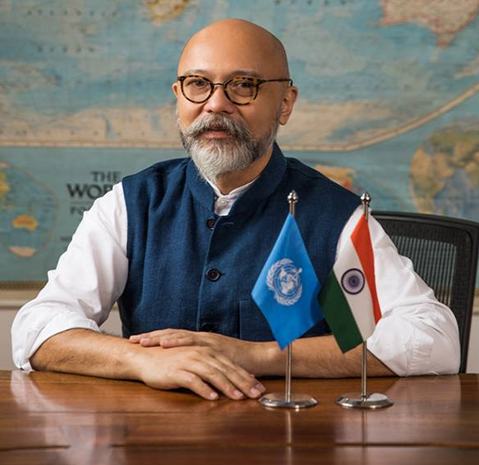World Patient Safety Day 2020
Promoting safety of health workers results in patient safety
By Dr Roderico H. Ofrin, WHO Country Representative to India
Our health workers are at the front line of the COVID-19 outbreak response and are our most precious resource for containing this outbreak. Many have given the ultimate sacrifice in carrying out their duties. The COVID-19 pandemic has brought to the fore, huge challenges and risks that health workers are facing globally this includes health care associated infections, violence, stigma, psychological and emotional stress, illness and even death. Furthermore, working in stressful environments makes health workers more prone to errors which can lead to patient harm. It’s important to understand that the safety and security of our health workers is very closely linked to safety of patient.
No one should be harmed in health care. And yet, recent evidence globally suggests that 134 million adverse events occur each year due to unsafe care in hospitals in low- and middle-income countries (LMICs), contributing to 2.6 million deaths annually [i]. The occurrence of adverse events, resulting from unsafe care, is likely to be one of the 10 leading causes of death and disability worldwide [ii]. Another study has estimated that around two-thirds of all adverse events resulting from unsafe care, and the years lost to disability and death (known as disability adjusted life years, or DALYs), occur in LMICs [iii].
Just to get a perspective, globally industries with a perceived higher risk, such as the aviation and nuclear industries, have a much better safety record than health care does. It is estimated that there is a 1 in 3 million risk of dying while travelling by airplane. In comparison, the risk of patient death occurring due to a preventable medical accident, while receiving health care, is estimated to be 1 in 300 [iv].
Recognizing patient safety as a global health priority, all 194 WHO Member States at the 72nd World Health Assembly, in May 2019, endorsed the establishment of World Patient Safety Day to be observed every year on 17 September to increase public awareness and engagement, enhance global understanding, and spur global solidarity and action to promote patient safety. The theme this year is “Health Worker Safety: A Priority for Patient Safety.”
Despite the many challenges, health workers continue to fight on the frontlines to protect us. To overcome the pandemic, we must unite to support those on the frontlines. The safety of our health workers warrants urgent action for effective measures to care for their physical and mental well-being. Further, the public needs to engage in the response and comply with COVID safe behavior.
The World Health Organization (WHO) urges all countries to take urgent and sustainable action to recognize health worker safety as a prerequisite for patient safety. Investments in improving patient safety can lead to significant financial savings and more importantly better patient outcomes. This is because the cost of prevention is typically much lower than the cost of treatment due to harm.
Greater patient involvement is the key to safer care. Engaging patients is not expensive and represents a good value. If done well, it can significantly reduce the burden of harm.
Let’s take the lesson from this pandemic to work for a safer work environment for our health workers and patients alike.[i]. National Academies of Sciences, Engineering, and Medicine. Crossing the global quality chasm: Improving health care worldwide. Washington (DC): The National Academies Press; 2018 (https://www.nap.edu/catalog/25152/crossing-the-global-quality-chasm-improving-health-care-worldwide, accessed 26 July 2019).
[ii]. Jha AK. Presentation at the “Patient Safety – A Grand Challenge for Healthcare Professionals and Policymakers Alike” a Roundtable at the Grand Challenges Meeting of the Bill & Melinda Gates Foundation, 18 October 2018 (https://globalhealth.harvard.edu/qualitypowerpoint, accessed 23 July 2019).
[iii]. Jha AK, Larizgoitia I, Audera-Lopez C, Prasopa-Plaizier N, Waters H, W Bates D. The global burden of unsafe medical care: analytic modelling of observational studies. BMJ Quality & Safety Published Online First: 18 September 2013. https://doi.org/10.1136/bmjqs-2012-001748 https://www.ncbi.nlm.nih.gov/pubmed/24048616.

Dr Roderico H. Ofrin, WHO Country Representative to India
